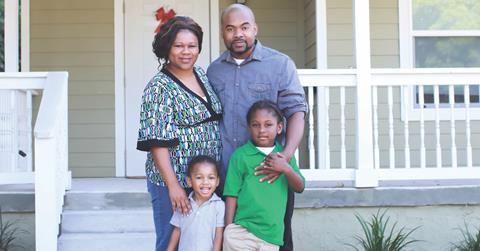Let me start by saying the work of revitalizing distressed communities is HARD. The navigation of issues associated with social detriments that ultimately impact social outcomes is inextricably tied. However, in distressed communities, the consequences of failure can be the difference between life and death. Ask anyone who does this work, and they will have countless stories about the challenges associated with the de-coupling of inter-related social issues that impact distressed communities. However, they will also say that strategic partnerships are essential to producing success.
Further, the challenge with revitalizing the aforementioned communities is poverty begets every other social detriment and one must be prepared to navigate the impact it has before change can begin. Therein lies the work of LISC. By coalescing around people and organizations that are closest to the problem, you afford yourself the greatest chance for success, as suggested by Brazilian educator Paulo Freire in his seminal work “Pedagogy of the Oppressed.” This same belief system is what led to the creation of LISC back May of 1980.
LISC’s approach to revitalizing distressed communities centers around a fundamental systems-change model commonly referred to as collective impact. This approach to revitalization allows LISC, its partner organizations, and the people who are indigenous to the community to develop a common set of metrics, a common dialog relative to said metrics, a common agenda, and a set of mutually reinforced activities that will drive revitalization. In most cases, LISC serves as the entity bringing parties together — a convener of sorts. In action, this looks like the following:
- Working alongside local and state government leaders
- Listening to resident leaders and developing their internal capacity
- Bringing innovative solutions based upon our national scope and reach
- Working to remove barriers that institutional policies have created
Locally, evidence of this process can be seen throughout neighborhoods such as Springfield, Historic Eastside, the Rail Yard District, and Metro North, just to name a few. LISC Jacksonville’s catalytic investments in projects that have served as transformational opportunities for both neighborhoods and the larger city are north of $100 million dollars and $365 million dollars in terms of dollars leveraged.

While the dollars are laudable and speak to the charitable nature of our donors and our capacity to make philanthropic dollars work, the transformation relative to place is just as impressive. Fostering real change and revitalization within our most vulnerable communities takes a collective effort. It is not a singular venture that can be undertaken by one entity successfully. Our quality of life and even our projection of who we are as a city is tied to our ability to develop strategic partnerships for the greater good. The work LISC does in the communities we work in, along with our broad list of partners, simply reflects the success of partnership at its highest and broadest level, achieving the greatest good for our most vulnerable neighbors and communities.

 LISC’s investments in Historic Eastside do not represent a singular investment in a social program with the hopes that the people will somehow be better. Our investments in Historic Eastside represent a belief in the enterprises that have been tried and true in terms of disrupting the entanglements that poverty and lack of solid investments bring. During the last 10 years, LISC Jacksonville has invested in people, homes, and technical assistance to empower the people who are closest to the issue with the tools to be a part of the change they want to see. We have partnered with organizations ranging from the United Way to LIFT JAX to Operation New Hope to get the work done.
LISC’s investments in Historic Eastside do not represent a singular investment in a social program with the hopes that the people will somehow be better. Our investments in Historic Eastside represent a belief in the enterprises that have been tried and true in terms of disrupting the entanglements that poverty and lack of solid investments bring. During the last 10 years, LISC Jacksonville has invested in people, homes, and technical assistance to empower the people who are closest to the issue with the tools to be a part of the change they want to see. We have partnered with organizations ranging from the United Way to LIFT JAX to Operation New Hope to get the work done.